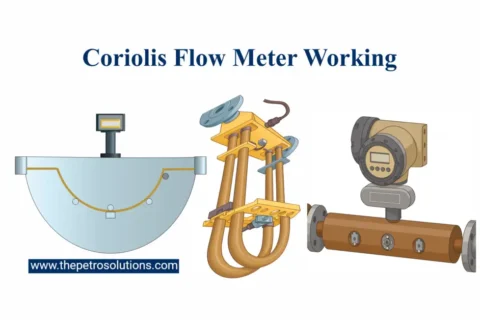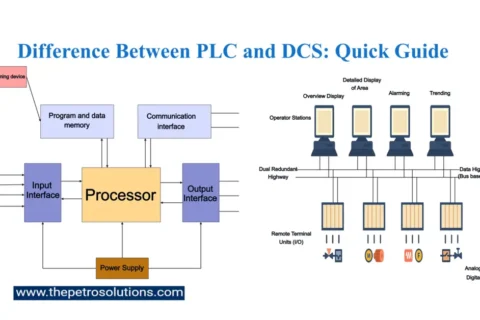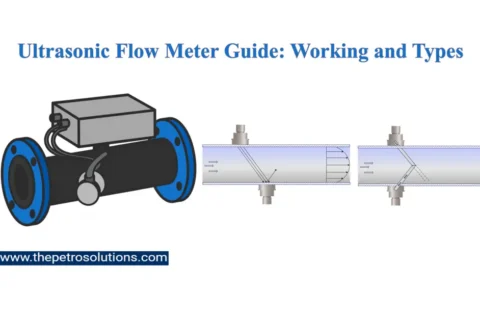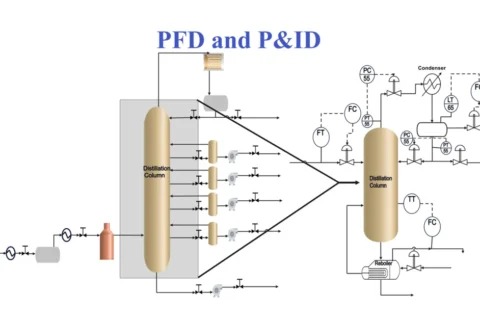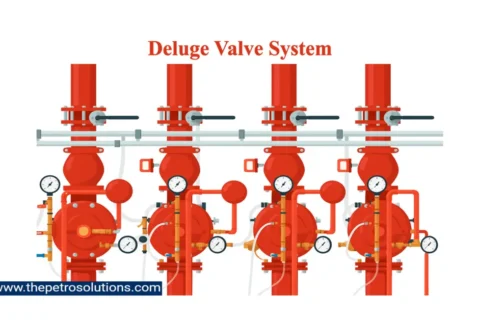Steam Management in Process Industries
Operating and maintaining a reliable steam system is critical for chemical processing facilities and can have a significant impact on a plant’s budget. Key factors that affect the profit margins are excessive fuel cost, inefficient steam generation and distribution, less-than-optimal steam utilization, and poor condensate recovery. A systematic approach for steam optimization to save energy in steam production, distribution, and utilization can yield pronounced fuel savings, improved reliability, and lowered greenhouse gas emissions.
Steam system optimization in the process industry is much necessitated due to its high energy cost and being the largest energy source. Steam shares nearly 30% of the total energy used in a typical oil refinery. Increasing the overall efficiency of the steam system by only one percent is significant. Unfortunately, most operations engineers focus only on boilers’ efficiency and steam traps but fail to look at the entire steam system. Saving only ~ 5 % in a 200 Tons steam system can save ~ 12000 $ per day & 4.4 million $ per year with the 50 $ per ton cost of high-pressure steam.
The steam production, distribution, and optimization process are the lifelines of the process plant. Steam is utilized throughout the chemical process plant as a motive fluid to run compressors & pump turbines, heating the reboilers, stripping steam, tracing, and many other applications.
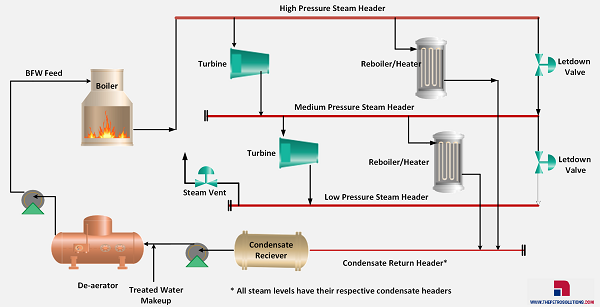
These are some general guidelines, for the optimization of industrial steam systems. By adopting these you can save ~ 10 % of the steam depending upon the steam system configuration.
- Understanding the steam system
- Training of the plant staff
- Insulation of steam network piping
- Waste heat recovery
- Avoiding steam venting and letdown
- Heat recovery from condensate and waste steam
- Reduce blowdown rates from boilers
- Steam traps loss
- Leakages from steam pipes
- Process parameters
- Improving the boiler’s efficiency
1. Understanding the Steam System
- Steam system optimization starts with understanding the steam system, monitoring, and calculating the steam consumption.
- The energy manager or the team leader must have a full understanding of the complete network of steam generation and utilization, steam consumption data of all equipment, and all steam flow rates.
- Regularly calculate at least once per month the cost of per ton steam produced, and daily consumption of all steam levels (High, Medium, and Low Pressure) per ton of desired product or the feed processed. Calculated values can be compared with the design and normal operating values.
- It is a continuous process to balance the plant’s steam, water, and electrical power during all process conditions while avoiding steam venting, and letdown. For instance, process conditions and steam need to be adjusted to meet new requirements due to changes in the feed composition of the processing unit. Steam balance can be a simple spreadsheet model or a DCS graphic but commercial modeling systems are also available.
- Viewing the current operating steam flow rates, set the benchmark of steam consumption. Also, plan the control actions to achieve the benchmark parameters and gradually reduce the steam requirements.
2. Training of the Staff
- After a full understanding of the steam system from generation, to condensate recycling, the next step is the implementation of a steam optimization plan. Each person must be trained for steam-saving targets. Also, develop new operating procedures for steam-saving, and steam optimization or include steps in the existing SOPS.
- Train the plant staff about steam optimization in their individual process units, the steam balance, and consumption calculations. Trend the actual vs target steam consumptions on the DCS so that they can notice and act on any variations in the steam consumption.
3. Insulation of Steam Network Piping
- Proper insulation of steam piping is one of the easiest energy-efficient methods. Lack of appropriate insulation can be a major source of heat loss and a safety hazard for the plant staff. Reasons for poor pipe insulation include system modifications, aging, negligence, or damage caused by maintenance, collision, or leaks.
- A single large uninsulated valve could be wasting thousands of dollars each year and will reduce the energy efficiency of the system. Removable covers of insulation can be installed for pipes and fittings, that require frequent maintenance.
- Monthly, audits of a steam system can help to identify the uninsulated locations. Further, properly fix insulation after each maintenance job.
4. Waste Heat Recovery
- Most of the steam utilized in the process plants is produced from process heaters’ flue gases or waste heat of furnaces. Adjust the parameters of furnaces for maximum heat recoveries from the flue gases. Minimize the heater draft or close the stack damper as much as possible for maximum heat recovery from flue gases. Further, identify and install coils for heat recovery in the furnaces or heaters where heat is being lost through flue gases and space is available for coils installation.
5. Avoiding Steam Venting and Letdown
- Steam venting is the direct loss of energy and water and should always be avoided. In the same way letdown of high-pressure steam to produce low-pressure steams or force letdown owing to high pressure is also a loss of energy and economically not feasible.
- Common causes of LP steam venting include a. too much flow through back-pressure steam turbines or letdown valves, which creates more low-pressure (LP) steam than the system can accommodate; b. excessive amounts of LP steam produced in waste heat boilers, c. inadequate turndown capability in boilers, and d. turbine producing LP steam has to take into service due to a faulty standby pump.
- When steam passes through an extraction turbine, its pressure drops, and some of its heat content converts into power. When it passes through a letdown valve, its pressure drops, but its heat content (enthalpy) does not change. It is always better to maximize the steam turbine use and produce low-pressure steam and minimize the use of steam letdown valves.
- Sometimes it is confusing to adopt the condensing or extraction mode of a turbine. Both of these conditions depended upon the system requirement. To avoid the letdown of the high-pressure steam, the turbine should be in extraction mode. Similarly, if the pressure of the extraction header is rising and steam has to forcefully let down then switch to condensing mode. Also, to meet the condensate demand turbines have to be on condensing but excess condensate would be a loss for the system if steam demand has to meet through a letdown valve.
6. Heat Recovery from Condensate and Waste Steam
- Steam condensate is a valuable resource and even the recovery of small quantities is economically beneficial and can reduce 10~ 20 % of fuel requirements at boilers. Recovered condensate not only provides sensible heat but also saves the cost of treatment for fresh Demineralized water.
7. Reduce Blow Down Rates From Boilers
- Insufficient blowdown may cause the carryover of impurities into the steam or the formation of deposits on boiler tubes. Excessive blowdown wastes energy, water, and treatment chemicals. It is generally better to perform several small blowdowns versus one massive blowdown each day or a minor continuous blowdown.
- Improve the quality of BFW to reduce the boiler blowdown. The better-treated water results in less blowdown and hence slighter energy loss.
- The use of automatic blowdown control can reduce the blowdown rates. Further, heat losses can also be reduced through heat recovery from the hot blowdown water.
8. Steam Traps Loss
- The steam traps help to supply dry, high-quality steam to its users, while continuously removing and recycling the condensate. Steam traps remove condensates from steam lines, even small passing of steam from a single steam trap can cause significant energy waste over time. Further, make-up water requirements will drop as more condensate is returned to the system, reducing pre-treating costs as well as steam loss.
- If the steam trap does not remove condensate from the steam header and wet steam passes through the equipment it may cause damage to the equipment internals like turbine blades.
- Conduct steam traps audit and identify any faulty, leaky, and blocked ones. Implement an effective steam trap repair and maintenance plan.
9. Leakages from Steam Pipes
- Aging, thermal shocks, loose glands of isolating valves, blockage of steam traps, and impurities in the steam header can cause leakage in the steam headers. The manned locations at the plant can be easily identified but unmanned areas are the points where steam traps can pass, and valves and piping can leak.
- Blocked steam traps unable to remove condensate may result in water hammer and leakage from the steam piping.
- The best defense against pipe leakage is a pipe regular inspection protocol. These days, thermal imagers (infrared cameras) are a powerful diagnostic tool for steam systems. They can easily detect any leakage or hot spots from steam piping and can also detect faulty steam traps.
10. Process Parameters
- Ensure that process parameters are correctly controlled. Reboilers, heat exchangers, steam coils, strippers, etc. temperatures are not overrun. Further, the equipment temperatures should be maintained to achieve the desired product quality parameters. Maintaining higher conditions would waste a noteworthy amount of steam. For example, if we control the Diesel product flash point at 62 °C instead of 56 °C then we are wasting ~ 2 tons of steam per hour.
- Optimize the steam turbine RPMs as per process requirements. For example in the hydroprocessing unit, if the Hydrogen/Hydrocarbon ratio is 250 as compared to the design ratio of 200, then reduce the turbine RPMs.
- Monitor the operating parameters and efficiency of the equipment and compare them with historical and design data. This will give an idea about heat transferring decline with the passage of time.
11. Improving Boiler’s Efficiency
- Minimize excess air to reduce the amount of heat loss and fuel utilization.
- Regularly clean the boiler tubes in an annual inspection and soot blowing of convection tubes. It will promote effective heat transfer and will improve the combustion efficiency of the boiler.
- Recover, most of the heat from exhaust flue gases by installing superheaters, economizers, and combustion air preheaters.
- Improve water treatment to minimize boiler blowdown rate and hence lower energy loss.
- Recover the utmost amount of heat from the boiler blow-down liquid.
- Maintain/repair refractories and leakages from the convection section and flue gases section to reduce heat losses from the boiler.
- Minimize avoidable loss of steam in the deaerator.
12. Miscellaneous Actions
- Remove or isolate the redundant or occasionally utilized steam piping.
- Preheat the Demineralized Water/Boiler Feed Water in the process equipment or with high-temperature condensate or condensate flash steam.
- Maintain the lowest acceptable steam header pressure because higher steam pressures need more energy to produce.
- Wet steam supply is known to cause internal damage to the turbines so always maintain a steam temperature sufficiently higher than the saturation point.
- For steam header monitoring and steam calculations, flow, pressure, and temperature measuring instruments are essential. Identify and install at the locations where required instrumentation is missing.
- Regular maintenance and cleaning of the fouled equipment for maximum heat transfer are necessary.
Top References
- Enhance Steam System Efficiency E-Book by Chemical Processing
- Improving Steam System Performance: A Sourcebook for Industry
- Advanced Steam System Optimization Program by Hydrocabonprocessing.com
- Steam Systems in Industry: Energy Use and Energy Efficiency Improvement Potentials
- Steam System Survey Guide by Greg Harrell, Ph.D., P.E
- Minimizing Steam Loss Through Steam Distribution Network Using Integrated Methodology
For further information, discussion and queries please comment in the box below or contact us at admin@ or follow us on Facebook & LinkedIn.

